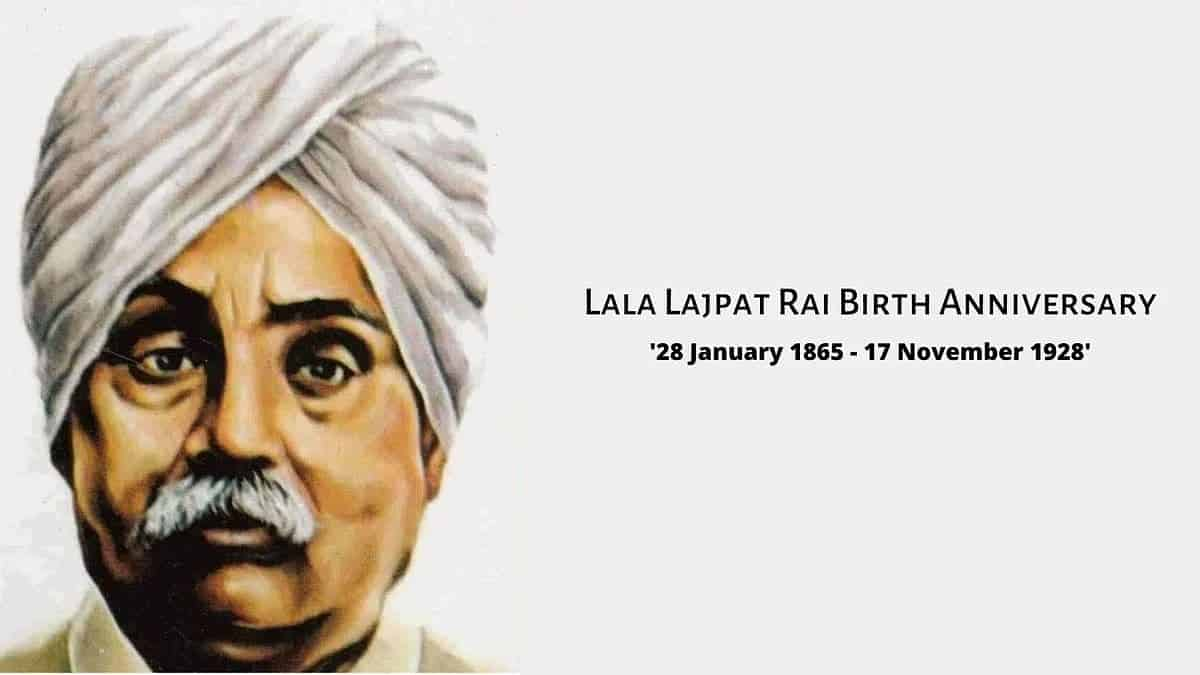Inspiring Punjab Kesari- Lala Lajpat Rai
Also known as “Lion of Punjab”.

“The Lion of Punjab” was an Indian independence activist, prolific author, politician, leading freedom struggler who played a pivotal role in the Indian Independence movement. He was among one ‘Lal Bal Pal’ trio.
Lala Lajpat Rai was born to Munshi Radha Krishna Azad, a great scholar of Persian and Urdu, and his wife Gulab Devi, a strict religious lady on January 28, 1865, in Ferozpur, Punjab. His mother is said to have had a strong influence on him. His youth was spent in Jagraon.
In 1880, Lajpat Rai joined Govt. College to study law at Lahore, where he came in contact with patriots and future freedom fighters, such as Lala Hans Raj and Pandit Guru Dutt. While studying here he got influenced by the Hindu reformist movement led by Swami Dayanand Saraswati ‘The founder of Arya Samaj”, he was also the first to give a call on ‘Swaraj’ in 1876. Lala Lajpat Rai became a member of Arya Samaj Lahore at that time.
The three were passionate supporters of robust swadeshi infrastructure to detach Indians from British systems. In support of this ideology, Rai went on to co-found the Punjab National Bank in 1894, Hans Raj and Vidyarthi co-founded the (present) DAV schools.
In early 1920, Rai set up National College in Lahore, Bhagat Singh and Sukhdev Thapar(known to be popular as just ‘Sukhdev’) were its students.
Lala Lajpat Rai was also said to be inspired by Italian revolutionary Giuseppe Mazzini, who spearheaded the Italian revolutionary movement for unifying Italy.
He joined hands with Bipin Chandra Pal and Aurobindo Ghosh from Bengal, and Bal Gangadhar Tilak from Maharashtra to call for ‘Purna Swaraj’.
He was imprisoned for around six months for his involvement in the revolutionary movement, in 1907.
1914, Rai went to Britain to gain support for Indian independence and then went to the U.S as well. He founded the Indian Home Rule League of America in New York in 1917. He finally returned to India in 1920. In 1920 only, Rai was appointed as the president of the Indian National Congress at the Calcutta session.
He later left the congress, as he was not in support of the opinion of Mahatma Gandhi’s Non-Cooperation Movement. Though later he supported that movement. When he actively participated in the non-cooperation movement against British rule, which was focused to eliminate Rowlatt Act( the act was made to jail any Indian who was threatening or causing damage to British rule through their protests). Showcasing bravery in opposing this new legislation, Lala Lajpat Rai was titled as ‘Punjab Kesari’ (the lion of Punjab), in Punjab.
A great believer in inter-faith harmony, Rai also believed in the two-nation theory. A separate nation for each would lead to peace and solve many purposes.
An article was written by Lala Lajpat Rai in The Tribune on 14th December 1923, evoked much controversy. The title of that article was “A clear partition of India into a Muslim India and non-Muslim India”.
In 1928, the British government set up a commission and included no Indian in the list. Lala Lajpat Rai led the silent march in protests. Against protest, British police declared a lathi charge, where Rai was assaulted and injured. Following this, he died on November 17, 1928, due to his serious injuries.17 November is celebrated as Martyrs’ Day in India.
Lala Lajpat Rai made a lasting impression in the minds of his countrymen not only by his leadership abilities but made his presence felt in many different fields – education, commerce, healthcare. As was a follower of Dayanand Saraswati and devotee of Vedic dharma(culture), he helped to establish the nationalistic Dayanand Anglo-Vedic School. He initiated the establishment of a bank as a swadeshi infrastructure which later evolved as the ‘Punjab National Bank’. He also established a trust in his mother Gulabi Devi’s name in 1927 and supported the opening of a tuberculosis hospital for women named Gulabi Devi Chest Hospital. -as per Lala Lajpat Rai Biography.


